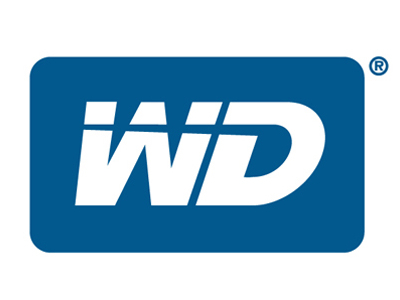Western Digital Intros My Book Thunderbolt Duo Drive
Western Digital has introduced an external drive using Thunderbolt connectivity.
Macworld/iWorld 2012 is now underway, and Western Digital has decided to use the Apple event to reveal its new My Book Thunderbolt Duo dual-drive storage system. As the name indicates, the external drive connects via the 10 Gbps Thunderbolt port and supports two 3.5-inch hard drives in a RAID 0 striped array.
"Thunderbolt technology is capable of producing up to 10 Gbps per second of throughput on each of two channels in both directions," WD said on Thursday. "Users can experience very fast read/write speeds especially during applications such as video editing, 3D rendering, and other intense graphics projects. To put Thunderbolt's speed into perspective, HD media creators will be able to transfer a standard size full-length HD movie in less than 30 seconds, or backup an entire year of continuous music (approx. 8,600 hours of music) in roughly 10 minutes."
Current hard drive technology will be the bottleneck in Thunderbolt's performance, as a demonstration shown at Macworld revealed a 6 TB Thunderbolt Duo to only have peak transfer speeds of 2 Gbps (250 MBps). Still, that's faster than USB 3.0 even in its present state, and allows users to shuttle a full HD movie back and forth in thirty seconds each way.
Little else is known about the My Book Thunderbolt Duo for now although it will arrive in 4 TB and 6 TB capacities whenever it hits the market. Pricing is also unknown, so stay tuned. Naturally Mac owners will have access to the product first until Windows-based PCs with Thunderbolt begin to emerge later this year.
Get Tom's Hardware's best news and in-depth reviews, straight to your inbox.

Kevin Parrish has over a decade of experience as a writer, editor, and product tester. His work focused on computer hardware, networking equipment, smartphones, tablets, gaming consoles, and other internet-connected devices. His work has appeared in Tom's Hardware, Tom's Guide, Maximum PC, Digital Trends, Android Authority, How-To Geek, Lifewire, and others.
-
lp231 One of Asus's ROG board includes Thunderbolt, but it's just a sound/net card combo.Reply
And if PCs don't pick up Thunderbolt, then it will go the way of Firewire 800. -
jaber2 lp231One of Asus's ROG board includes Thunderbolt, but it's just a sound/net card combo.And if PCs don't pick up Thunderbolt, then it will go the way of Firewire 800.At least you could have found them on Sony desktops RIP.Reply -
aftcomet I forgot my RAIDs but isn't RAID 0 where if one drive fails, they all do? For backing something up, I think reliability would be preferred over speed.Reply -
bramathon Can someone explain to me the point of having faster connections when hard drives only work at like 60 MB/s?Reply -
soccerdocks aftcometI forgot my RAIDs but isn't RAID 0 where if one drive fails, they all do? For backing something up, I think reliability would be preferred over speed.Reply
Yes, that is how RAID 0 works. However, I think the intended usage for this is to quickly copy files from one computer to another. One situation where this would be useful is video editor who has to work both from home and the office. -
inthere Point of having faster connections is the My Book is putting 2 drives in a single enclosure in a RAID 0 configuration which allows it to hit speeds of 175+ mb/sec (they actually claim 250) Lacie did the same thing and already have drives out that are getting speeds of 190+ mb/sec (Little Big Disks)Reply -
bramathon So wikipedia tells me that usb 3.0 is capable of ~600 MB/s. DOes thunderbolt offer any advantage over a usb2.0 drive?Reply -
CaedenV bramathonCan someone explain to me the point of having faster connections when hard drives only work at like 60 MB/s?Even slow drives move at 120MB/s these days, and with SSD and RAID available we need something faster than 1000/t ethernet, and USB3 which is already too slow for many applications (just like USB2 was when it came out). Besides, as I understand it, thunderbolt is a daisy-chain style interface (like firewire use to be back in the day), which means that all devices share a common pool of bandwidth. The cool thing about thunderbolt is that it (supposedly) can run multiple simultaneous protocols over the same wire. Meaning you can daisy chain your monitor, external HDDs, network to another PC/mac, or even use adapters to plug in USB, or firewire devices in, and each device will speak in it's original language of SATA, HDMI, etc. The idea is that it would be the 'last' and single interconnect for every device from your monitor to your cell phone. If you had that many devices connected all at once it would quickly become understandable that you need massive amounts of bandwidth.Reply
Practically speaking it does monitors, HDDs, and some audio protocols (though you would need a thunderbolt amp/receiver/decoder to make that useful, and I dont think they are out yet), with others to come in later revisions. It was also supposed to be over fiber optic cable (thus the name Lightpeak originally), but that was thrown under the bus with all the other disappointments we have had with the interface so far. Still a good idea, just far short of what we were promised.
